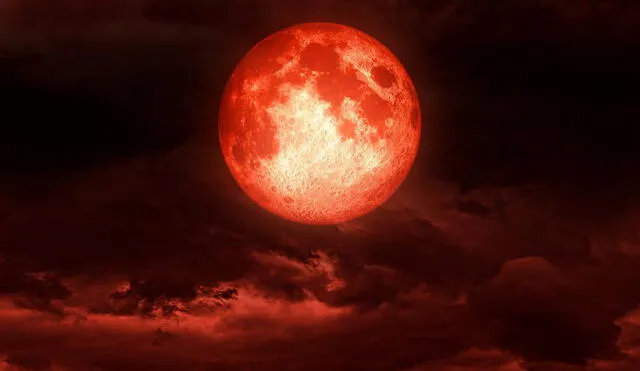7 surprising facts about tonight's ‘Blood Moon’ total lunar eclipse
Most of the U.S. should be able to see the total lunar eclipse tonight, but clouds will be problematic for many.

On the night of Thursday, March 13, skywatchers will be treated to a breathtaking total lunar eclipse, with totality peaking at 11:54 p.m. PT (or early Friday, March 14, at 2:54 a.m. ET). This celestial phenomenon occurs when the sun, Earth, and moon align perfectly, casting the Earth's shadow over the moon.
This rare total lunar eclipse, often referred to as a “blood moon,” will grace the skies for the first time in over a year. North America will have the best view, with all time zones able to enjoy a mesmerizing 65-minute totality as the full moon transforms into a reddish spectacle. Here are seven details about it that will amaze you:

ALSO SEE: Best viewing spots for Blood Moon tonight — Here the US weather forecast and eclipse details
1. It’s caused by a ‘Thousand Sunsets’:
A total lunar eclipse occurs when the full moon passes through Earth’s shadow in space, which is why it loses much of its brightness. But why does it turn a reddish color during totality? The answer lies in refraction. When the moon is completely within Earth’s darkest shadow, known as the umbra, the only sunlight reaching its surface has to travel through Earth’s atmosphere.
Much like a sunset appears red, the moon also takes on a reddish hue because longer-wavelength red light passes through the thickest part of the atmosphere more easily, while shorter-wavelength blue light is scattered by atoms. NASA describes the effect as “a range of hues painted on the moon by all of Earth’s sunrises and sunsets.”
2. About 863 million people will see it
Approximately 863 million people live in regions where the entire eclipse, from start to finish, will be visible — primarily in the Americas. This represents about 10% of the global population. Meanwhile, nearly 3.2 billion people, or almost 40%, will be able to witness at least one phase of the eclipse.
3. Earth’s shadow will be seen moving across the Moon
As Earth orbits the sun each year, it casts its shadow into the outer solar system. A full moon, positioned directly opposite the sun, occasionally passes through this shadow. When it does, the result is a stunning sight, though often overlooked. While the totality of a lunar eclipse grabs most attention, the partial phases on either side reveal Earth’s vast shadow slowly creeping across the moon’s surface. For an unforgettable experience, step outside an hour before totality and continue observing for an hour after.
During the initial partial phases, you might expect the moon to gradually turn red, and indeed it does. However, our eyes, which lack high dynamic range, first see a bright side of the moon and a nearly black side as Earth’s shadow moves across it. It’s only when the moon is fully enveloped in Earth’s shadow — at the start of totality, when light levels become more balanced — that the entire moon takes on a reddish hue.
4. The Moon’s orbit is tilted
Twice a year, the full moon crosses through Earth's shadow. This doesn't occur every month because the moon's orbit is tilted. As a result, most full moons pass either above or below the cone-shaped shadow that Earth casts into space.
5. NASA predicted the Moon’s color
While it's well known that the full moon turns reddish during a total lunar eclipse, each eclipse is unique. This happens because the moon passes through Earth's darkest shadow, the umbra, in slightly different ways each time.
The closer the moon is to the center of the umbra, the redder it will appear, while areas farther from the center will take on a lighter, pinkish or peach hue. Since the moon is in motion during totality, its appearance will change noticeably — and NASA’s Ernie Wright already has a clear understanding of how it will look.
6. It's one of the smallest moons of 2025
While the full Worm Moon — which will transform into a "blood moon" for 65 minutes — is sure to be a striking sight, it will actually be one of the smallest full moons of the year.
Just as some full moons appear larger when the moon is closest to Earth, known as supermoons, there are also full moons that are farther away and appear smaller. The smallest full moon of 2025 occurred on February 12 during the snow moon, but the Worm Moon on March 14 will be nearly as small.
7. The Galápagos Islands get prime view
While the total lunar eclipse will be visible across all of North America and most of South America, there is one spot right at the heart of it all. Located at the center of the vast area where the entire eclipse can be seen, this place is in the Pacific Ocean, south of Mexico and west of Ecuador. The closest landmass is the Galápagos Islands, Ecuador — a world-renowned wildlife hotspot — where totality will begin at 00:26 GALT.











